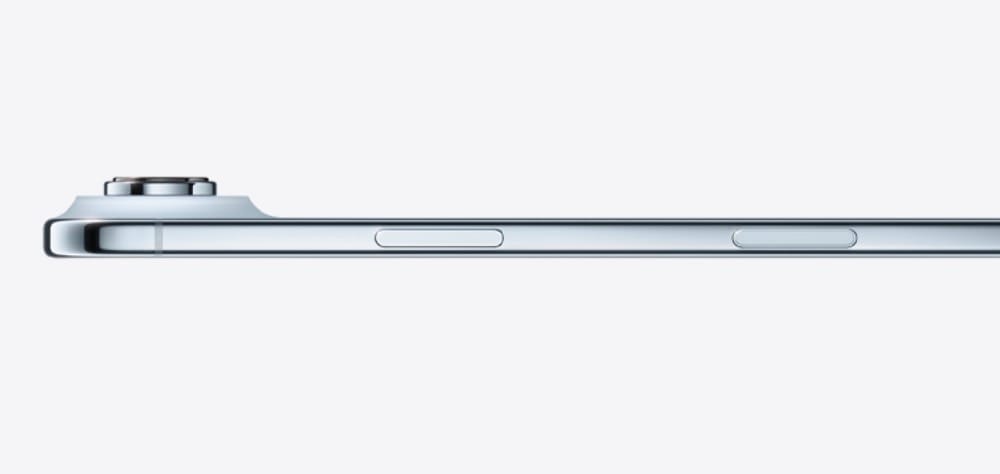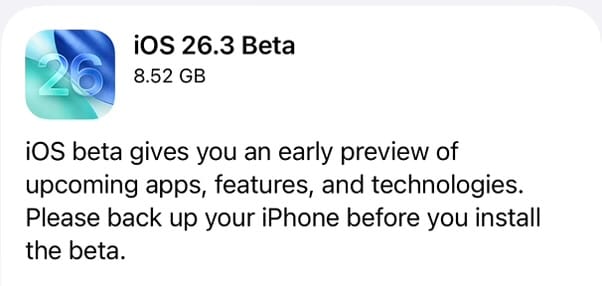The smartphone industry witnessed an unusual convergence in 2025: two tech giants simultaneously betting on ultra-thin design as the next premium differentiator. Samsung's Galaxy S25 Edge launched in May at just 5.8mm thick, followed by Apple's iPhone Air in September at 5.6mm. Both devices represented significant engineering achievements, pushing the boundaries of how slim a modern flagship could become while maintaining premium materials and specifications.
Yet within months, both manufacturers face a similar challenge. Production cutbacks, disappointing sales figures, and industry reports paint a picture of consumer ambivalence toward thinness as a primary value proposition. The question now facing the industry isn't just about these two devices—it's about whether ultra-thin smartphones represent a viable market segment or a miscalculation of consumer priorities.
The Samsung Galaxy S25 Edge: A Brief Run
Samsung positioned the Galaxy S25 Edge as a premium addition to its flagship lineup, launching it alongside the standard S25, S25 Plus, and S25 Ultra. At 5.8mm thick with a titanium frame and 6.7-inch display, the device targeted consumers who valued portability and aesthetics above all else. Priced at $1,099.99, it sat between the Plus and Ultra models in Samsung's hierarchy.
Sales Performance
The numbers tell a stark story. According to data from Hana Investment & Securities, the Galaxy S25 Edge sold approximately 190,000 units in its first month—a fraction of its siblings' performance. By August 2025, cumulative sales reached only 1.31 million units. In comparison, during the same timeframe, the Galaxy S25 sold 8.28 million units, the S25 Plus moved 5.05 million units, and the flagship S25 Ultra achieved 12.18 million units.
These figures represent more than disappointing sales—they indicate a fundamental disconnect between Samsung's expectations and market demand. Even the S25 Plus, often considered the weakest performer in Samsung's lineup, outsold the Edge by nearly 4:1.
Production Decisions
By June 2025, reports emerged that Samsung had "considerably lowered" production targets for the Galaxy S25 Edge. The situation accelerated rapidly. In October 2025, Korean publication NewsPim reported that Samsung had halted production entirely and canceled development of the Galaxy S26 Edge, which had already been completed and was scheduled for a January 2026 release.
An anonymous Samsung Electronics official stated: "I don't know if the slim line will come back, but it doesn't look easy at the moment. I think you can consider it to have essentially disappeared."
The company had reportedly considered replacing the Galaxy S Plus model with the Edge in future lineups, viewing it as a potential refresh for a segment that historically underperforms. Those plans now appear abandoned.
The iPhone Air: Production in Freefall
Apple's iPhone Air launched four months after the S25 Edge with considerable marketing emphasis on its design achievement. At 5.6mm thick along one edge and weighing just 165 grams, it became Apple's thinnest iPhone ever. The device featured a titanium frame, 6.5-inch ProMotion display, Apple's A19 Pro chip, and satellite connectivity features previously reserved for Pro models. Priced from $999 in the US, it positioned itself as a premium alternative within the iPhone 17 lineup.
Initial Reception and Sales Trajectory
Early reports from China suggested strong demand, with the device reportedly selling out within hours of preorder availability. However, performance in Western markets told a different story. The iPhone Air remained consistently available for immediate shipment on Apple's website across all colors since launch—a stark contrast to the iPhone 17 and iPhone 17 Pro models, which showed shipping delays of two to three weeks.
By mid-October 2025, Japanese investment firm Mizuho Securities reported that Apple planned to reduce iPhone Air production by one million units, while simultaneously increasing production of other iPhone 17 models by two million units. The initial production plan had allocated the iPhone Air approximately 10-15% of the new iPhone batch for 2025.
Supply Chain Cuts
The situation deteriorated rapidly. On October 22, 2025, Nikkei Asia reported that Apple had slashed iPhone Air production to near "end-of-production levels," with November manufacturing volumes projected at less than 10% of September levels. One component supplier manager described the situation: "The total forecast has almost entered end-of-production mode, dropping significantly compared to earlier projections."
Analyst Ming-Chi Kuo provided additional context, noting that suppliers were expected to reduce capacity by more than 80% between October 2025 and the first quarter of 2026. Some components with longer lead times were being discontinued by the end of 2025 altogether.
Apple's overall iPhone 17 series forecast remained stable at 85-90 million units, indicating the company was reallocating production capacity rather than reducing it. The iPhone 17 was reportedly performing significantly better than the iPhone 16, and the Pro and Pro Max models showed stronger year-over-year demand.
The Trade-offs Behind Thinness
To understand the market's lukewarm response, examining the compromises required for ultra-thin designs provides crucial context.
Battery Capacity
Both devices made significant battery concessions. The Galaxy S25 Edge housed a 3,900mAh battery—substantially smaller than the 4,900mAh in the S25 Plus and 5,000mAh in the S25 Ultra. The iPhone Air's battery specifications were not officially disclosed, but reports indicated it offered approximately five hours less usage time than the iPhone 17 Pro Max.
In a market where battery anxiety affects 42% of daily smartphone users and battery life ranks as the top purchasing factor for 76% of consumers, these trade-offs directly conflicted with stated consumer priorities.
Camera Compromises
Samsung eliminated the telephoto lens from the Galaxy S25 Edge, offering only main and ultrawide cameras—a significant downgrade from the multi-camera systems in its siblings. The iPhone Air featured a single 48-megapixel wide camera, matching the main sensor in the iPhone 17 and 17 Pro but lacking the additional lenses those models provided.
With camera quality influencing 64% of smartphone purchasing decisions, the reduced photography capabilities represented another misalignment with market preferences.
Thermal Management and Charging
The constrained internal volume in ultra-thin devices creates thermal management challenges. The Galaxy S25 Edge supported only 25W wired charging, slower than many competitors. Apple developed a $99 MagSafe battery pack specifically for the iPhone Air to extend battery life to 40 hours—an acknowledgment that the built-in capacity wouldn't satisfy many users.
Price Positioning
Both devices carried premium pricing despite offering fewer features than their thicker counterparts. The Galaxy S25 Edge at $1,099.99 cost more than the standard S25 and S25 Plus while delivering less functionality. The iPhone Air at $999 positioned between the $799 iPhone 17 and the $1,199 iPhone 17 Pro, occupying a price bracket where consumers traditionally expect comprehensive feature sets.
What This Reveals About Consumer Priorities
The simultaneous struggles of two flagship thin phones from the industry's dominant players offer revealing insights into smartphone purchase behavior.
The Battery Life Imperative
Survey data consistently shows battery life as the primary concern for smartphone buyers. The average smartphone battery life reached 11.7 hours of screen-on time in 2025, with fast charging (65W or higher) available in 61% of smartphones launched this year. Users increasingly expect devices that comfortably last through intensive daily use without requiring constant charging management.
The thin phone category's inherent battery limitations directly oppose this trend. While manufacturers emphasized "all-day battery life" through software optimization, consumers appear skeptical of marketing claims that don't align with their usage patterns.
Value Proposition Confusion
The premium pricing of thin phones created a perception gap. Consumers paying flagship prices typically expect flagship capabilities—comprehensive camera systems, maximum battery capacity, fastest charging speeds, and latest features. When thin phones cost as much or more than fuller-featured alternatives, the value equation becomes difficult to justify for most buyers.
The strong performance of the iPhone 17 (outselling its predecessor significantly) and the continued dominance of the Galaxy S25 Ultra suggest consumers are more interested in balanced, feature-complete devices than niche form factor experiments.
The "Plus" Problem
Samsung's consideration of replacing the Galaxy S Plus line with the Edge reflected awareness that large-format non-Ultra devices struggle in its lineup. However, the Edge's even worse performance suggests the problem wasn't just screen size—consumers simply didn't see sufficient value in the positioning.
The Galaxy S25 Plus, while the weakest seller in Samsung's lineup, still managed to move 5.05 million units in the same period the Edge sold 1.31 million. This indicates that even incremental improvements (larger screen, bigger battery) matter more to consumers than radical thinness.
Market Implications and Industry Response
The thin phone setback carries implications beyond two product lines.
Shifting Product Strategies
Samsung's complete abandonment of the Edge line and cancellation of the S26 Edge suggest the company views this as a categorical failure rather than a single-generation misstep. The decision to kill a product that had already completed development reflects how dramatically sales missed internal projections.
Apple's approach appears more measured, with production cuts rather than complete cancellation. However, the 80% capacity reduction and component discontinuation indicate Apple isn't merely adjusting for seasonal demand—it's fundamentally reassessing the device's viability.
Focus on Foldables
Industry analysts note that both Samsung and Apple are increasing investment in foldable technology. The smartphone market for foldables crossed 15 million units in 2024 and shows a 6.9% CAGR, with falling hinge costs and maturing ultra-thin glass yields improving economics. Samsung is reportedly boosting foldable production for the US market, partly in response to tariff considerations but also as a strategic pivot.
Foldables offer thinness as one attribute within a broader value proposition that includes expanded screen real estate and novel use cases. This suggests consumers may accept thin designs when they're part of a transformative feature rather than the primary differentiator.
The Premiumization Paradox
Despite thin phone struggles, the overall smartphone market continues premiumizing. Devices priced above $800 generate a widening share of industry profit, even as they represent a minority of global volume. Apple's iPhone 16 Pro and Pro Max shipments in 2024 exceeded iPhone 15 Pro series by 11%, reaching over 55 million units. Samsung's Galaxy S25 series delivered the strongest S-series volume since 2019, weighted toward Ultra models.
This indicates consumers are willing to pay premium prices—but for comprehensive flagship experiences that maximize capabilities rather than minimize dimensions.
The Future of Thin
Several factors will influence whether ultra-thin phones can evolve into a sustainable category.
Battery Technology Advances
Current lithium-ion technology, dating to the 1970s, faces fundamental limitations in energy density relative to volume. Next-generation technologies like solid-state and graphene batteries promise higher capacity in smaller spaces, but both face mass production challenges. Solid-state batteries suffer from swelling issues critical in tight chassis designs, while graphene batteries encounter low yield rates that make them commercially impractical at scale.
Until battery technology enables 4,000mAh+ capacity in ultra-thin form factors without thermal or durability compromises, the category faces inherent limitations.
Engineering Economics
The extreme precision required for ultra-thin devices increases manufacturing costs while reducing yields. Titanium frames, advanced cooling systems, and structural reinforcements add expense that gets passed to consumers without proportional perceived value. When a thicker device can deliver better performance at lower cost, market forces favor the latter.
The Niche Question
Analyst reports consistently characterize slim phones as "niche" products appealing to style-conscious early adopters rather than mass-market segments. This framing may reflect reality—some consumers do prioritize form over function and will pay premiums for aesthetic differentiation.
However, niche products typically don't occupy flagship price positions in mainstream lineups. The thin phone category may need repositioning as a mid-tier offering at lower price points to find sustainable demand, similar to how "lite" or "fan edition" models operate.
Regional Variations
Market reception showed geographic differences worth noting. The iPhone Air reportedly performed relatively better in China compared to Western markets, with preorders selling out quickly. Chinese consumers have historically shown greater receptivity to thin designs and lighter devices, with domestic manufacturers like Oppo and Tecno releasing ultra-thin models targeted at this preference.
However, even strong initial Chinese reception couldn't offset global underperformance enough to maintain production levels, indicating geographic preferences can't sustain a product when broader markets resist.
Lessons for Product Development
The thin phone situation offers several takeaways for smartphone development:
1. Feature Completeness Matters: In the premium segment, consumers expect comprehensive capabilities. Removing features—even if necessary for form factor goals—creates dissatisfaction when alternatives offer more at similar prices.
2. Battery Anxiety is Real: Marketing claims about optimization and "all-day life" can't overcome user skepticism born from experience. Consumers who've lived with flagship-capacity batteries won't willingly downgrade.
3. Innovation Requires New Use Cases: Successful form factor changes typically enable new functionality rather than just aesthetic variation. Foldables justify their differences through expanded screens and multitasking. Ultra-thinness alone doesn't unlock new use cases for most consumers.
4. Timing and Context: Both devices launched into a market where AI features, camera capabilities, and battery life dominate discussion. In a different market context with different priorities, thin designs might resonate differently.
5. Market Research Limitations: Despite presumably extensive consumer research by both companies, actual purchasing behavior diverged significantly from anticipated demand. This highlights the challenge of gauging interest in category-creating products where consumers have no prior experience.
Conclusion
The parallel struggles of the Samsung Galaxy S25 Edge and Apple iPhone Air represent a notable moment in smartphone evolution—not because ultra-thin devices failed to achieve engineering excellence (they did), but because they revealed a disconnect between manufacturer innovation priorities and consumer value hierarchies.
Both devices pushed technological boundaries, employing exotic materials, advanced manufacturing techniques, and clever engineering to achieve unprecedented thinness. Yet the market response has been decisively lukewarm. Production cuts, sales underperformance, and strategic pivots indicate that thinness for its own sake doesn't resonate as a compelling value proposition at premium price points.
This doesn't necessarily herald the death of thin design exploration. As battery technology evolves, manufacturing costs decrease, and use cases emerge that leverage ultra-thin form factors, the category may find sustainable footing. Foldables, which incorporate thinness as one attribute within a broader transformation, suggest how thin designs might succeed when part of a more comprehensive value proposition.
For now, the industry appears to be learning an expensive lesson: consumers will pay premium prices for premium capabilities, and they define "premium" through practical features like battery life, camera performance, and functional completeness rather than purely aesthetic achievements. The smartphone has evolved beyond being a fashion accessory—it's a critical tool that must work reliably throughout demanding days. Until thin phones can deliver that confidence without compromise, they're likely to remain ambitious experiments rather than mainstream successes.
The market has delivered its verdict clearly. Whether manufacturers will respond with technological breakthroughs that address fundamental limitations or simply abandon thin phones as a false start remains to be seen. Either outcome will shape the industry's approach to form factor innovation in the years ahead.












Discussion